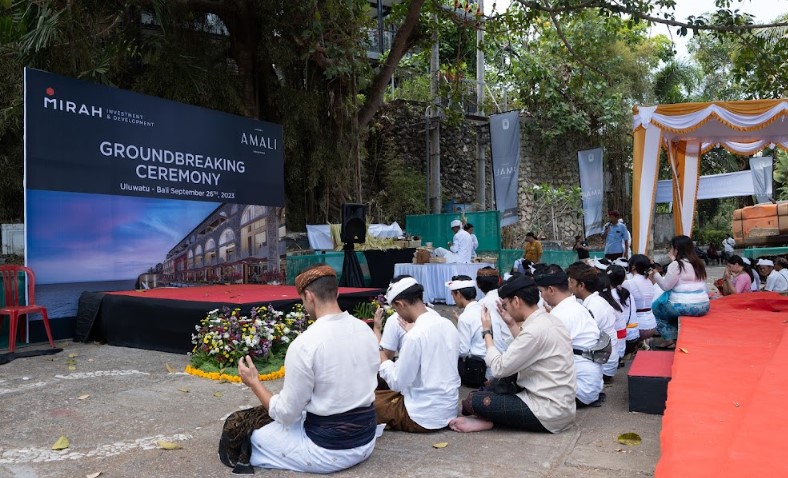As more destinations open up to travel again, the world is full of fun possibilities. But the higher prices — from plane tickets to accommodations — can mean considerable sticker shock. To save money while having the best experiences, do as the savvy travellers do; read on for practical tips, every step of the way.
Travel tips: Booking and planning
“Lean hard into any enrolment offers on travel credit cards. I have one card linked to Marriott Bonvoy, and another to Aeroplan, and scored both a free hotel room in New York in the height of summer and a free flight thanks to those sign-up bonuses.” — Maryam Siddiqi, travel writer and owner of Provenance, a small-group tour company that explores countries through their wellness traditions
“I love to book open-jaw flights — this is an itinerary where you fly into one city, and then fly out of another city. The plane fare can be roughly the same as a classic round-trip, but you can see two cities on one vacation; you just have to make your own way between them. This is especially great if the two cities are well connected by budget airlines (lots of places in Europe and Asia) or, even better, an easy, affordable train route (say, Porto and Lisbon).” — Wing Sze Tang, travel writer and editor
“When booking flights, the airlines always try to get you to reserve your seat and pay for it in advance. But if you check in online right at the 24-hour mark, you can basically have any seat that’s not reserved, without paying $20 or more.” — M. S.
“Save money on accommodations in major cities by staying further from the centre. There’s always fast transit or rail links into the city, and there are so many local gems waiting to be discovered — for example, great pizzerias in Bushwick (Brooklyn) or gastropubs in Croydon (south London).” — Jim Norton, travel and commercial photographer
“If you are focused on an activity, opt for up-and-coming or secondary destinations. A day of skiing at Whistler is upwards of $200, for example, while a day at Kelowna’s Big White is about half that. The same goes for the price of hotel rooms.“ — Diane Selkirk, travel writer
“When travelling within a country, check out alternatives to flying. Ferries, trains and buses may get you there faster once you factor in the airport time-suck, and be much cheaper. Plus, in many countries these methods of transportation can be quite luxurious, even the buses.” — Lola Augustine Brown, travel writer
“On my European travels, I travel by train as much as possible. It’s cheaper and more sustainable, and passes like Switzerland’s Swiss Travel Pass allow unlimited travel on the efficient SBB railway system — and include access to local public transportation and entry to 500-plus museums nationwide. Plus, children under 15 travel for free with adult pass-holders.” — Claudia Laroye, travel writer
Travel tips: Organizing family travel
“For larger families, it’s often more practical and affordable to opt for an Airbnb rental over a hotel. But we often book one that’s close to a resort, as these will sometimes offer day passes to use the pools and other amenities, and we can access the on-site restaurants easily, too.” — Bianca Bujan, travel writer
“Don’t try to squeeze too much mind-blowing kid stuff into a trip — the whole family will appreciate some planned down time, and you’ll save money. You can ditch one expensive day at the theme park for a chill day at the hotel pool, and everyone will still have a blast.” — L.A.B.
Travel tips: Once you arrive at your destination
“If you have an unlocked cellphone, you can avoid spending a small fortune in data roaming. These days, you don’t even need to go hunting for a physical, local SIM card in your destination; you can just buy an eSIM pretrip, if your device is compatible. It’s cheap and easy. I do this using the Airalo app before I leave home, so as soon as I land in a new country, I just switch on the eSIM (and switch off my usual number).” — W.S.T.
“I stopped taking cabs to and from the airport long ago, taking secret pleasure in the money I save. Most cities have alternate routes to the airport, like high-speed trains or express buses, usually from larger transit and train stations. For example, the bus from LaGuardia Airport to the subway line is free, and after that, you can ride into Manhattan really quickly during rush hour for $2.75.” — Doug Wallace, travel writer and editor
“Currency exchange is generally highly regulated. But in some countries — Argentina, for example — locals use services that do these transactions at a more favourable ‘blue rate’ that can be double what you get per dollar. Sounds shady but is a normal part of life in many countries. Your hotel may even offer to exchange at those rates, if you know to ask.” — J. N.
“Take public transit whenever and wherever you can. A lot of people are hesitant to hop on a bus or subway, especially if it isn’t the way you get around at home, but truly, most transit systems are pretty easy to navigate, wherever you are in the world. Plus, Google Maps is a fairly reliable trip-planning resource in most cities.” — Jen Mallia, travel writer and editor
“When you take one of those hop-on, hop-off open-top bus tours, the tickets are often valid for two days. On day one, I’ll do the tour because it’s a super quick, easy and actually practical overview of the city — they typically take you to the biggest sights and the most popular neighbourhoods. On the second day, I just use it as my own personal public transport, which is way cheaper than taking taxis.” — M. S.
Travel tips: Eating, drinking and exploring
“You may not be able to afford the posh hotel, but you are certainly welcome to have a drink in the lounge. And most of the big hotels have happy-hour specials that include free snacks. Great people-watching, too.” — D. W.
“At a restaurant or bistro, sit at the bar. You end up having conversations that give you local insight like no other way. I find that people are always willing to share their favourite places, which quite often are way off the radar. I’ve found out about great restaurants, hidden geothermal pools, secret beaches and obscure roads and trails that have made trips great experiences.” — J. N.
“Don’t be afraid to try local foods, street style. I spend a lot of time in Northern Thailand and the street food is incredible, at a fraction of the prices of restaurants that target tourists. Khao soi and fried quail eggs from the night market in Chiang Mai’s old town are favourites.” — Jennifer Haddow, owner of Wild Women Expeditions tour company
“Don’t hesitate to deviate from your normal meal schedule. While covering a women’s world hockey championship in Helsinki, I ate the equivalent of two huge meals daily at the breakfast buffet at my hotel. While in Washington, D.C., for a travel writing assignment, I lived off the happy hours in Georgetown.” — Lucas Aykroyd, travel writer
“Food tours are a great way to see an area and discover where you may want to return and enjoy a full meal later in your trip. They can be quite reasonable, too. On a recent chef-led walking tour around one of Mexico City’s fanciest neighbourhoods, we sampled truly delicious food from seven different restaurants for around $120.” — Amy Rosen, food and travel writer
“Before booking, I always check that my hotel room has a mini fridge and will buy snacks and yoghurt at a local grocery store, so I can have breakfast there. I don’t have to start each day worrying about where to eat, and I save money, too.” — M. S.
“If your kids are fussy eaters, don’t feel guilty about only ordering them rice or fries — or whatever they will actually eat — when you go to restaurants. Your frustration levels will be lower, and you won’t be throwing money away by expecting them to magically behave differently just because you’re in a new location.” — L.A.B.
JOIN THE CONVERSATION
does not endorse these opinions.
:format(webp)/https://www.thestar.com/content/dam/thestar/life/travel/advice/2023/03/04/travel-well-save-money-12-savvy-canadian-travellers-share-their-surprising-expert-tips/travel_tips_pool.jpg)

:format(webp)/https://www.thestar.com/content/dam/thestar/life/travel/advice/2023/03/04/travel-well-save-money-12-savvy-canadian-travellers-share-their-surprising-expert-tips/travel_tips_lounge.jpg)




More Stories
Pet Relocation: A Comprehensive Guide for a Smooth Move
11 Best Places to Travel in July 2023
Nigeria travel advice – GOV.UK